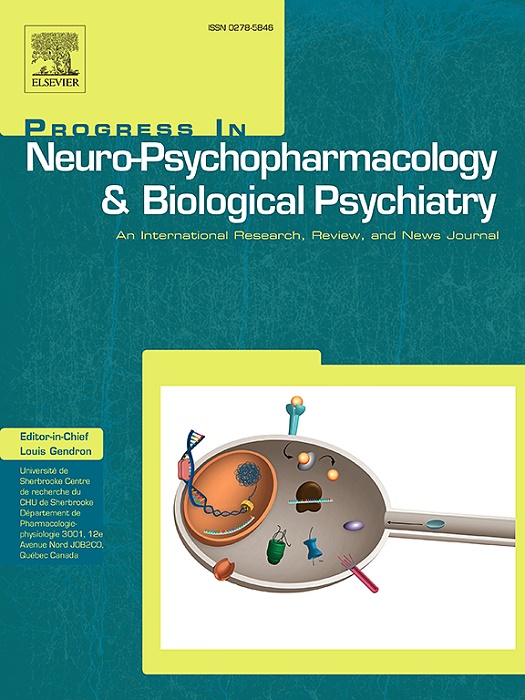Executive dysfunction in Parkinson's disease: From neurochemistry to circuits, genetics and neuroimaging
IF 5.3
2区 医学
Q1 CLINICAL NEUROLOGY
Progress in Neuro-Psychopharmacology & Biological Psychiatry
Pub Date : 2025-01-27
DOI:10.1016/j.pnpbp.2025.111272
引用次数: 0
Abstract
Cognitive decline is one of the most significant non-motor symptoms of Parkinson's disease (PD), with executive dysfunction (EDF) being the most prominent characteristic of PD-associated cognitive deficits. Currently, lack of uniformity in the conceptualization and assessment scales for executive functions impedes the early and accurate diagnosis of EDF in PD. The neurobiological mechanisms of EDF in PD remain poorly understood. Moreover, the treatment of cognitive impairment in PD has progressed slowly and with limited efficacy. Thus, this review explores the characteristics and potential mechanisms of EDF in PD from multiple perspectives, including the concept of executive function, commonly used neuropsychological tests, neurobiochemistry, genetics, electroencephalographic activity and neuroimaging. The available evidence indicates that degeneration of the frontal-striatal circuit, along with mutations in the Catechol-O-methyltransferase (COMT) gene and Leucine-rich repeat kinase 2 (LRRK2) gene, may contribute to EDF in patients with PD. The increase in theta and delta waves, along with the decrease in alpha waves, offers potential biomarkers for the early identification and monitoring of EDF, as well as the development of dementia in patients with PD. The PD cognition-related pattern (PDCP) pattern may serve as a tool for monitoring and assessing cognitive function progression in these patients and is anticipated to become a biomarker for cognitive disorders associated with PD. The aim is to provide new insights for the early and precise diagnosis and treatment of EDF in PD.

求助全文
约1分钟内获得全文
求助全文
来源期刊
CiteScore
12.00
自引率
1.80%
发文量
153
审稿时长
56 days
期刊介绍:
Progress in Neuro-Psychopharmacology & Biological Psychiatry is an international and multidisciplinary journal which aims to ensure the rapid publication of authoritative reviews and research papers dealing with experimental and clinical aspects of neuro-psychopharmacology and biological psychiatry. Issues of the journal are regularly devoted wholly in or in part to a topical subject.
Progress in Neuro-Psychopharmacology & Biological Psychiatry does not publish work on the actions of biological extracts unless the pharmacological active molecular substrate and/or specific receptor binding properties of the extract compounds are elucidated.

 求助内容:
求助内容: 应助结果提醒方式:
应助结果提醒方式:


